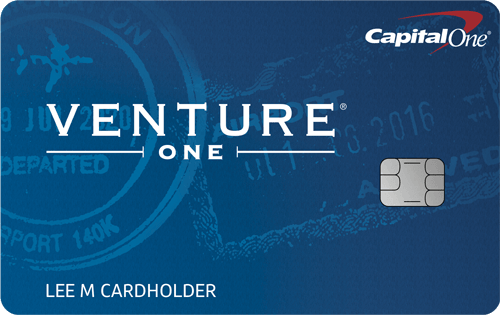I’m going to be honest, I’m not one of those flashy travel hackers.
I don’t have 20+ rewards credit cards with an average annual fee of $300 per card.
I don’t work the system to the enth degree and enjoy free family trips to Paris and Hawaii.
I’m just a girl who has used 4 credit cards (currently) to save thousands of dollars on flights and airbnbs over the last 6 years.
Some of the places I’ve visited:
- Austin, TX
- Atlanta, GA
- Orlando, FL
- Dallas, TX
- Destin, FL
- Vancouver, British Columbia
- Cinque Terre, Italy
- Lake Como, Italy
- Milan, Italy
- Chicago, IL
My older brother was the one who introduced me to the idea of using travel credit cards to save money while I was in college.
Who knows if I would have ever discovered travel hacking if he wouldn’t have been someone who liked to work the systems of life to his advantage and cared enough to teach me about it.
Today we’re going to discuss my travel hacking story and how it could help you with yours.
I’m not saying I’m like your big sister or anything, but I am saying that sharing information that saves people money is something I’m interested in.
Why?
Because I have had tons of people share with me along the way and to this day, and I believe the more people who learn about money management and money saving tips, the better.
“Experience is a master teacher, even when it’s not our own.”
― Gina Greenlee

How I Got Started
I started travel hacking the summer of 2015.
This was after I had graduated college and backpacked through Europe with my older brother.
We were able to visit:
- Dublin, Ireland
- London, UK
- Paris, France
- Cinque Terre and Rome, Italy
He used his rewards cards to book our flights and hostels and I was instantly hooked by the idea of saving money on travel simply by signing up and using credit cards.
Fast forward a few years.
I had built up my credit score, thanks to my parents, who let me become an authorized user on one of their accounts, and was ready to pick my first rewards card.
How I Chose My First Travel Rewards Card
I chose my first rewards card based on three things:
- The sign on bonus
- The points accrual rate
- No annual fee
Since I had finished my degree early and had taken what ended up being a gap year after college, I didn’t want an annual fee card.
Not to say annual fee cards are a bad idea. They are usually the absolute, hands down best idea for gaming the system and cashing in on big rewards.
Those cards just required two things I didn’t have at the time:
- Lots of money to spend in a short period of time (to get the sign on bonuses)
- Steady job to pay the annual fee and the initial statements
Spending $4,000 – $5,000 in a few months at the time was not something I could do responsibly. I didn’t have many bills or expenses, and was not planning on making any big purchases.
My goal was a low risk card with the highest rewards that I could use to pay the few bills and expenses I had to save money on flights and vacations.
Also, since the initial plan was long term use, I didn’t want my first credit cards to be something that cost me every year.
My Travel Hacking Criteria
Setting up the criteria for choosing a card will save gobs of time in the research phase.
This is a matter of looking at your stage of life and assessing what you can afford to do.
Assess your stage of life and a few basics, including:
- Income
- Living expenses
- Bills
Also, look at the goals and major purchases you have coming up:
- Is tuition due?
- Are you about to buy a home?
- What about a vehicle?
- What about vehicle maintenance–like new tires or new brakes?
- Doctor’s bills?
And the list can go on.
Your stage of life largely dictates what kind of rewards cards will benefit you most.
I’m using ‘stage of life’ as a broad generalization for the sake of example.
For instance, someone who is a Junior in college will not choose the same rewards card as someone who has worked 10 years in a corporate position who travels 3 times a month for work.
Determining your criteria is also largely based on your travel goals.
Beginning with the end in mind, to quote Franklin Covey, will help streamline deciphering the offers and perks and choose the option that best fits your needs.
Since travel hacking is a glorified ‘game’ of playing the credit card systems in your favor, the criteria is where you determine how you can win and benefit the most while playing the game.
A Couple of Examples
The Capital One Venture X Rewards credit card has an excellent sign on bonus of 75,000 points (a $750 value).
Also, this card has an extremely high points accrual rate of 2x – 10x points depending on your type of purchase.
These benefits sound great, but there are two things to consider:
- You have to spend $4,000 in 3 months to get the sign on bonus
- You have to pay a $395 annual fee (yep, that’s every year)
For some, this card’s annual fee is worth it. Those people are frequent flyers and big spenders and will always come out ahead with the points accrual rate of this particular card.
It’s really a matter of figuring out the benefit to cost ratio.
The other example would be the Capital One VentureOne card (the second card I ended up signing up for).
The VentureOne card is a no annual fee card with a very low sign on bonus threshold.
All you have to do is spend $500 in 3 months to get the 20,000 sign on bonus ($200 value).
The VentureOne card obviously fit my criteria better than the Venture X card.
Happy Balance
The main things to look at to determine criteria include:
- Income
- Stage of life
- Travel goals
- Bills and expenses
Assessing all these factors and comparing them with the benefits, bonuses, and requirements of rewards cards is a matter of finding the happy balance between the cards that require the least, but provide the most benefit.
My Top Picks for First-Time Travel Hackers
After extensive reading about the best no annual fee cards, I decided to apply for the two credit cards that kept appearing at the top of the recommended lists:
- The Discover It Miles credit card
- The Capital One VentureOne credit card
The list of perks for these cards matched my travel goals and fit my bills and expenses at the time. It’s also noteworthy that they both still appear at the top of most no annual fee ‘best’ lists.
I still use both of these cards today and would recommend them to anyone looking to start travel hacking.
Discover It Miles
The Discover It Miles card was the first travel card I signed up for.
With no annual fee, a 1.5x points per dollar value, and an UNLIMITED sign on bonus, Discover was a great first card to start with.
In essence, you get 3x miles per $1 spent in the first year on every single purchase.
At the end of the year, Discover will match all the points from the first year.
Obviously this bonus benefits higher spenders the most, but at my stage of life, I was still able to spend paying my regular bills and expenses for a year and get a nice matching bonus.
Not to mention, my brother also allowed me to buy the floors for the house he was building at the time. I used my Discover card to get all those points and he just paid me back.
Cha-ching.
This strategy works if you have family or even friends you trust enough to pay you back.
I’ve done this several times over the years with family or friends who weren’t into using travel credit cards and didn’t mind Venmoing or PayPaling me back for making larger purchases for them.
The Discover It Miles card perks:
- 1.5x points per $1
- Unlimited bonus – Discover matches all points earned in the first year (3x points!)
- $0 annual fee
- Redeem points for travel
- Redeem points for statement credits or for cash
- Mile never expire
Discover It Miles points are worth 1 cent. Each dollar spent is equal to 1.5 cents in points.
Redeeming points with the Discover card is easy.
The points value is the same across all types of redemptions. Meaning, you can redeem points for travel expenses, statement credits, and cash back for the full point value.
This perk is one to highlight, especially for cards you’re looking to keep long term.
The Discover card works really well throughout different stages of life. The cash back redemption feature can be used for travel or groceries, or doctor’s bills.
Also, in 2020 Discover recognized gas as a travel expense that could be redeemed.
In comparison, some cards only reward full point value to expenses coded as travel, which does not include gas station purchases.
Capital One VentureOne
The second card I signed up for was the Capital One VentureOne card.
This card was easy to understand and made sense to have in my rewards card wallet because as a Visa, it is one of the most accepted cards on the market.
Since one of my goals was to travel abroad more, I wanted to add the Visa to my list since the Discover card was known for having some issues with being accepted overseas.
Those issues have since disappeared in 2022, but Visa is still your best bet for traveling abroad.
The perks:
- 1.25x points per $1
- 20,000 sign on bonus (after spending $500 in 3 months)
- $0 annual fee
- Redeem points for travel
- Redeem points for cash or gift cards (at a slightly lower points value rate)
- Miles never expire for the length of the account
Points are worth 1 cent each.
Users can redeem points for travel purchases using the Chase Purchase Eraser. It’s easy and quick. Statement credits will be credited to your account in 2-3 business days.
For more perks, read this article <link>
Travel Hacking 2.0
Recently, my travel hacking game has graduated to the next level.
This is due to a few things.
- Being married and having more bills, expenses, and projects
- Being more established in my career
- Listening to a Bigger Pockets Money podcast and realizing I had internalized some things about travel hacking that weren’t actually true
Number one and two are obvious. Moving into a different stage of life naturally increases bills and expenses. And being established in a career affords excess to work projects and be flexible with bulk spending when needed.
So while the rewards cards with higher minimum spend bonuses were off the table in the beginning. They were suddenly on the table and I had just never reconsidered.
A New Understanding
I didn’t revisit my travel hacking approach after I had signed up for the two previously discussed cards. As the years went on, I thought I was set with the cards I had.
This changed when I listened to a Bigger Pockets Money podcast that interviewed a self-proclaimed travel hacking PhD.
The episode set aside my hesitancy for applying for higher rewards cards in a few ways.
I’ll link the episode here.
The main thing I realized is that there are ways to sign up for credit cards with annual fees and make them work for your lifestyle, even if you aren’t a very big spender.
How?
- Pay your monthly bills in bulk.
- Like vehicle insurance
- Internet bill
- Utilities
- Bulk buy gift cards to places you know you’ll use
- Buy things you’re already planning to buy through credit card online shopping portals
- Save up bigger expenses like new tires or a home renovation for a new travel card
I understood that many annual fee cards come with annual perks that help offset the fee. And secondly, that signing up for multiple high rewards cards for the sign on bonus and canceling those cards later, wasn’t as big of a credit score hit as I initially believed.
My Current Top Picks for Travel Hacking
My top picks for this new level of travel hacking include cards with annual fees and higher sign on bonuses.
- Chase Sapphire Preferred card
- Southwest Rapid Rewards Plus card
Chase Sapphire Preferred
This card is at the top of pretty much every travel hacking site out there, and for good reason.
While it has a $95 annual fee, the card benefits deliver.
- 1-5x points per $1
- 5x points for Chase Travel
- 2x points for all other Travel
- 3x points for dining and select grocery services
- 1x points for everything else
- Point value is 1.25 cents using Chase Travel
- Bonus – 60,000 points ($750 value) after spending $4,000 in the first 3 months
- $50 annual hotel credit
- $95 annual fee
I signed up for this card specifically to help pay for an Alaska trip we were planning.
It is also worth noting that Chase has some of the best market offers out there, including 3x points for paying for select streaming services, grocery delivery services, etc.
Using the Chase shopping portal is also a new approach for me. While I rarely online shop, I will buy certain things throughout the year and will certainly use the Chase portal to do so.
It’s no extra cost to me, and rewards extra travel points for things I already planned to buy.
Southwest Rapids Rewards Plus
I signed up for this card specifically for a Hawaii trip we were planning.
- 2x points for Southwest purchases
- 2x points for internet, cable, phone, and select streaming
- 2x for transit and ride share
- 1x point per $1 for all other purchases
- Point value is ~1.5 cents
- Bonus – 30,000 points ($450 value) and 1 year of companion pass after spending $5,000 in the first 3 months.
- Bonus (current) – 40,000 ($640 value) after spending $1,000 in the first 3 months.
- New! Earn Companion Pass thru 2/28/23 by signing up by 3/14/22
- $69 annual fee
Since I like flying Southwest, this card was already on my radar.
I was just waiting for a better offer to come out.
In February, the offer was a 30,000 point sign on bonus with a promotional companion pass.
Taking advantage of this incentive ended up being more beneficial than signing up in December (when the bonus incentive was 100,000 points) simply because we did plan to take a few trips with higher flight prices. The companion pass would erase half of our airfare, no matter the trip, for one year.
The Hawaii flight prices alone would bring me close to that original offer of 100,000 points ($1,400 value).
In the spirit of learning how to play the game, I’d also like to point out that Southwest promotions roll out pretty often.
The standing offer at the moment is 40,000 points after spending $1,000 in the first 3 months.
Just know you can always sign up for the promotional emails while you’re waiting for the perfect moment to go for a card.
What’s Your Travel Hacking Story?
So there we have it. A rambly post with a few tips along the way.
What’s your travel hacking story?




